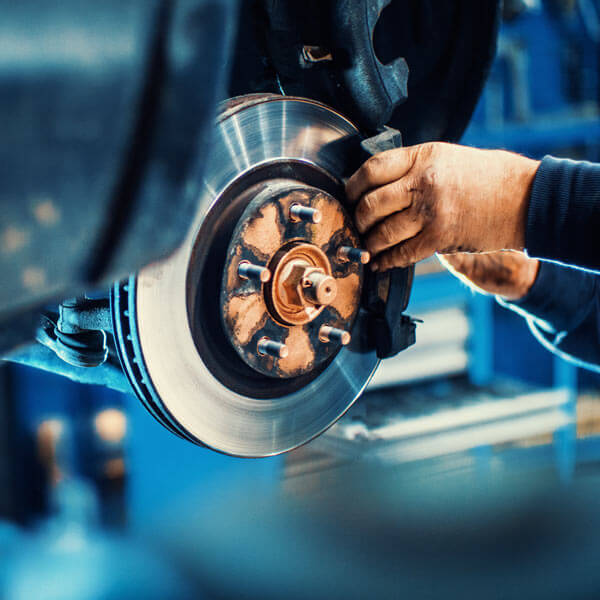Brakes
Brake Service & Repair in Silver Spring
Brakes won’t improve the look of your car or help you reach 60 miles per hour any faster, but they can save your life. That’s why it’s important that you pay attention to your car’s brakes and visit Murray’s Auto Clinic in Silver Springs, MD at the first sign of brake trouble. Our experienced mechanics can perform a variety of maintenance and repair services to keep your brakes in tip-top shape.

Common Signs of Brake Trouble
Spotting early signs of brake trouble can save you a lot of time, frustration, and even money in the long run. If you recognize any of the following signs, bring your car to the brake service and repair professionals at Murray’s Auto Clinic.
- Poor braking performance
- Squealing or grinding noises during braking
- Excessive drag during acceleration
- Pulsating brake pedal during braking
- Soft, spongy brake pedal
- Lit ABS light on dashboard
Important Brake Components
Your vehicle’s brakes consist of five main components: brake pads, rotors, calipers, lines, and a master cylinder. A problem with any one of these separate components can affect the entire system and cause brake performance issues. Here’s a quick breakdown of these important brake components and what each part does.
Brake pads apply pressure and friction to the rotors. This pressure and friction is what slows the wheel and ultimately stops the vehicle. You can tell your brake pads are bad when you hear grinding or a high-pitched squealing when applying the brakes.
Brake rotors, also called brake discs, are what brake pads clamp down on to stop the wheels from spinning. Driving on worn-out brake pads will eventually cause major rotor damage and require you to either replace or refinish your car’s rotors.
The brake caliper fits over the rotor like a clamp. Inside each caliper is a pair of metal plates, or brake pads. When you step on the brake, the calipers squeeze the brake pads against the rotor to slow or stop the vehicle. Any fluid on the rotor or inside disc may imply damaged seals and connections within the caliper housing.
Brake lines carry hydraulic fluid from the master cylinder to the brake calipers, forcing them to clamp down on the brake rotors to slow the car. If you notice signs of a fluid leak near your front or rear wheels, have your brake lines checked for leaks.
When you step on the brake pedal, you are pushing against a plunger in the master cylinder which forces hydraulic fluid through the brake lines to the braking unit at each wheel. If air gets inside the master cylinder, the brake lines will need to be bled.
